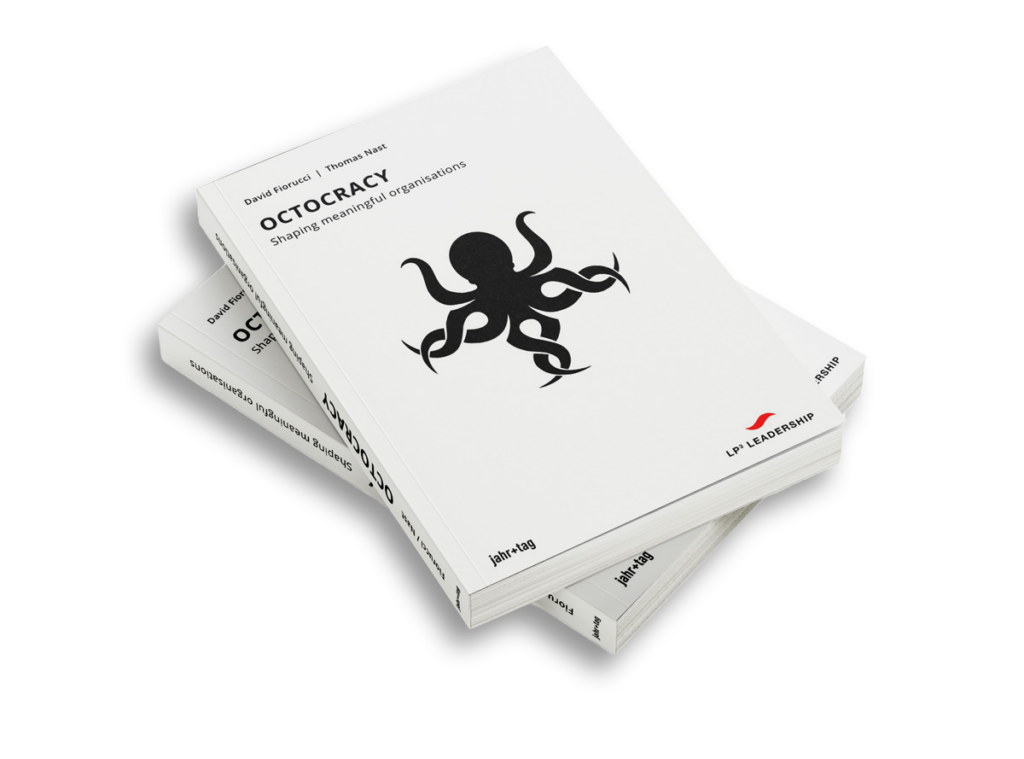
WELCOME TO
LP³ OCTOCRACY
LP3 Octocracy combines the proven elements of holacracy,
including some of Frederic Laloux’s principles, with Leadership
(LP3) by drawing inspiration from nature, in particular from the octopus.
An 8-element approach is the result:
TOGETHER WE CAN REVOLUTIONIZE THE WAY WE WORK TOGETHER
David Fiorucci | Thomas Nast
1. Tension
(Buddy principle)
In holacracy, a tension is defined as a feeling or perception of a gap between the current reality and a desired reality. It can be a problem, an opportunity, a need or a desire that is felt by an individual or a team and that requires action to remedy.
Tension is an often misused resource.
Having a sparring partner (a buddy) is of primary importance. There are three tasks to consider:
- Stimulate to act (challenge)
- Positive reinforcement
- Help to manage energy


2. Impact
To increase impact, three factors are important.
- It is necessary to have a common language, a common understanding at all levels.
- Another key parameter is to be coherent.
On the one hand, to have a personal coherence. On the other hand, to be coherent within the organization, the company, the society.
To do this, it is necessary to ensure coherence between various elements such as communication, personnel development and the tools and processes used, applied and in force.
This coherence between these elements is called congruence and ensures a relevant deployment, with the desired impact. - In addition, we must strive to keep it simple. Simplicity does not mean ease.
To have the desired impact and thus achieve the above mentioned points, it is essential to be consistent. That is to say, on the one hand, to really do what we have decided to do and on the other hand, to put up certain barriers.
3. Octopus
mollusk with several distinct features, including:
- high intelligence and ability to learn quickly (agility)
- distribution of the “power”, more than 70% of the neurons* are distributed in all the body (eight autonomous arms) and the remainder in a central brain ensuring the coordination: movements, vision, memory
- extreme adaptability and flexibility
- ability to regenerate
- three hearts to provide a very efficient supply of oxygen to all tissues of the body.
* It should be noted that the neurons have an optimal management and use of energy.
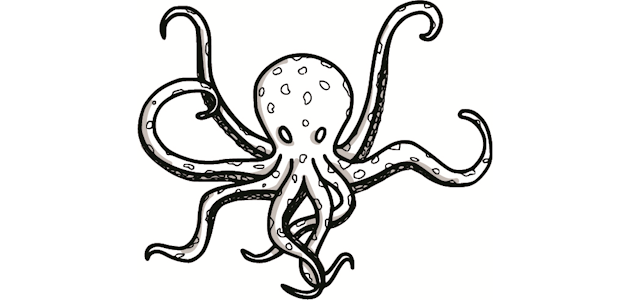
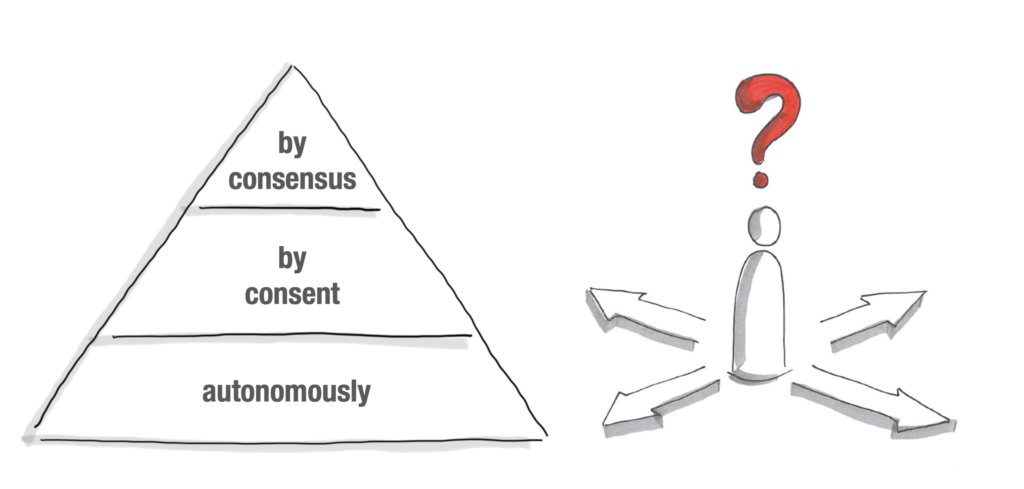
4. Decision-making
(shared power)
Wanting to distribute power is noble, but it implies taking on more responsibility. The English have the right term with the notion of “accountability”. This assumption of responsibility in turn implies being able to bear the consequences that flow from it.
In this context, decision-making is one of the essential levers for the distribution of power.
It is therefore necessary to have clear decision-making structures that are adapted to the company, the organization and its personnel, without leaving certain people on the sidelines.
Thus, three levels or types of decision making are to be considered:
- Decision by consensus,
- decision by consent and
- autonomous decision making.
If a person has the right to make decisions, to make mistakes, to learn from his mistakes and to grow, he will decide more easily, more quickly and above all, if he is wrong, he will be able to more easily go back on his decision, modify it and thus gain agility.
5. Vision as a common compass
The vision is ideally a drawing that is explained through a story (Storytelling).
On the basis of the Vision and the Mission, principles of behavior and conduct are defined in connection with the values of the company in order to accompany the path towards the vision and thus achieve this vision. The strategic axes are broken down into objectives and steps (key results). This is called an OKR. Finally, an annual review of the vision is planned.
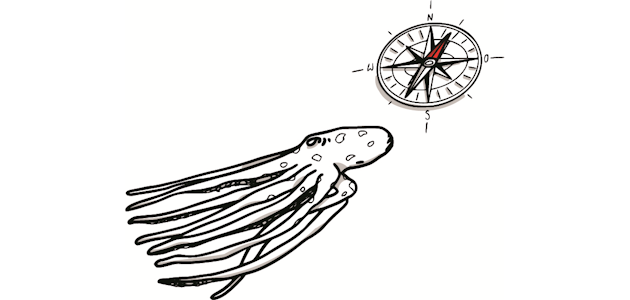
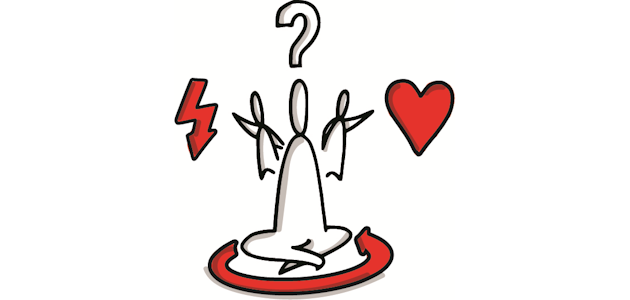
6. Principles of behavior
(and conduct)
that guides the behaviour of an individual or group in a given situation.
In the business context, behavioral principles may be stated in codes of conduct, company policies or ethics charters. They can also be transmitted through training, communication and performance management.
Rules for defining behavioral principles:
- The sentence begins with “I…”.
- The sentence contains an active verb.
- The sentence mentions a single element.
For example: “I give constructive feedback”.
It is important to keep it simple and especially to stick to a few principles (3 to 5 per value).
The principles of conduct are constructed in the same way, but have a leveraging role with respect to the principles of behavior. They enable employees to live and apply the principles of behavior.
7. Micro-enterprise
To distribute power within an organization or a company while leaving a strong entrepreneurial dimension, the principle of the micro-enterprise is a relevant alternative to the famous circles of holacracy.
Each micro-enterprise will have to think about the following points:
- what is our contribution to the company’s vision?
- what are our objectives?
- Who are the stakeholders and their needs?
- What activities are necessary to achieve the objectives?
- what are the inputs and our outputs (with added value)?
- what resources do we need?
- what is our room for maneuver (decision making)
- what are our key indicators (performance, progress, development) and how are they measured?

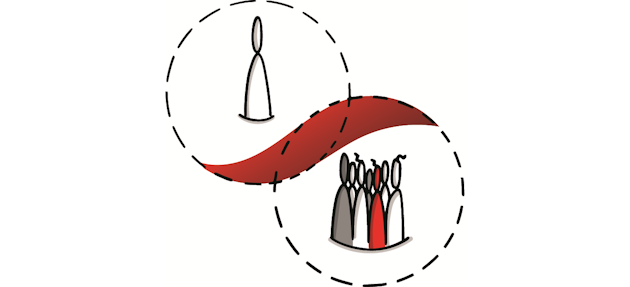
8. Learning enterprise
(learning culture)
Learning loops were developed by psychologist and management theorist Chris Argyris in the 1970s. He proposed two types of learning loops that explain how individuals and organizations learn from their experiences. Thus we learn from our mistakes and pass them on to others.
By analogy, we can use these two learning loops also at the level of the organization, of the company. Thus, the first loop is a work in the system, at the level of the team, of the micro enterprise, of the circle and the second loop is a work on the system, allowing to question certain functioning and certain organizations. This allows the system to evolve to be as agile as possible and above all as efficient as possible.
In concrete terms, these loops are applied through structured meetings, during which tensions are also taken into account.
CIOTODAY
DAVID FIORUCCI:
CEO & Founder of LP3 AG
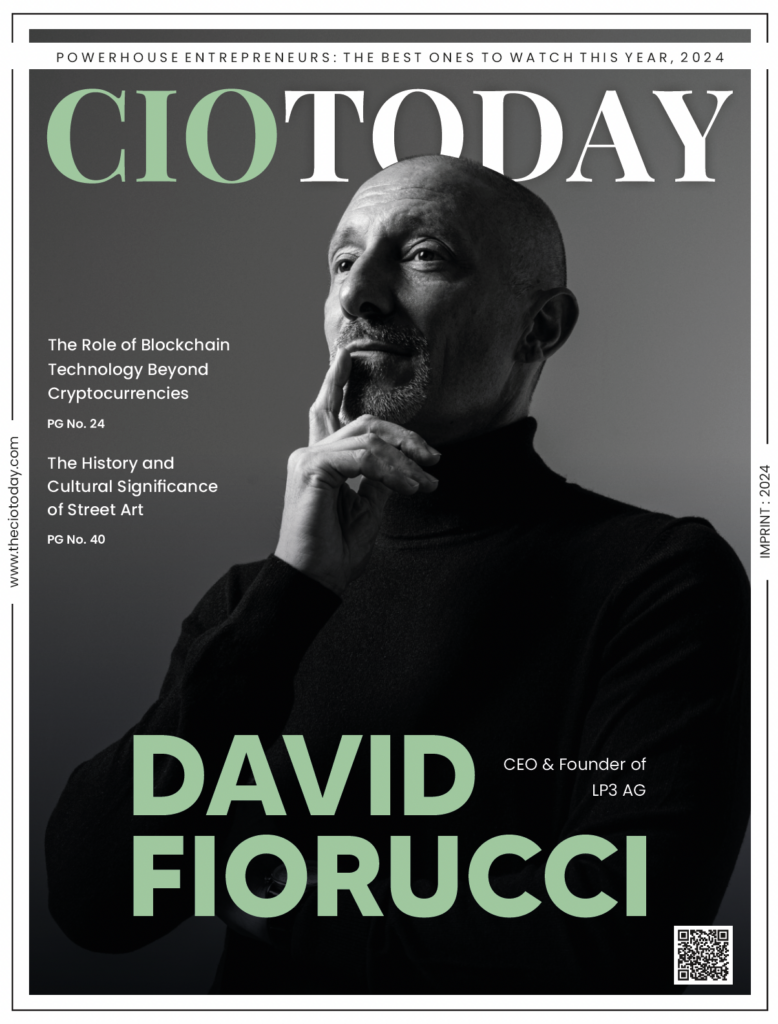

Book “OCTOCRACY”
LP3 Octocracy combines the proven elements of holacracy,
including some of Frederic Laloux’s principles, with Leadership (LP3) by drawing inspiration from nature, in particular from the octopus. An 8-element approach is the result.
-> Order now
